One of the many things I enjoy about photography is that it’s always challenging me to evolve and adapt. Evolution is a fact, whether you believe in facts or not. And just like nature, photographers should always be looking to evolve and adapt. Getting set in your ways and not embracing new technologies – especially as a professional – means you’ll likely be following the path of the dinosaurs. That’s why you find so few pros still using film. And the introduction of Nikon’s Z 9 at the end of this NFL season gave me a great opportunity to explain that evolution in action.
Because of the number of night games in pro sports, photographers have had to invest in “fast” long lenses, meaning first 300mm, then 400mm f/2.8 lenses. As high ISO performance in digital cameras progressed and we were able to shoot at higher ISO’s and still get good quality, long zoom telephotos with apertures of f/4 became usable (being able to zoom out as a player was running towards you meant more good photos). For the last fifteen years, Nikon’s 200-400mm f/4 was my (and many others’) “bread-and-butter” lens for both day and night games covering the NFL as well as MLB and other outdoor sports. Then COVID happened, and everything changed.
Last season (2020), photographers covering the NFL were moved off the field, up to the first row of the stands. Being further away from the sidelines meant that 200-400mm lens wasn’t long enough any more, at least for what I needed to do. My assignment for AP Images was to concentrate primarily on tight, vertical (as much as possible), action photos of marquee players that would have re-sale value. That meant I had to shoot tighter than most photographers, so I adapted and left my 200-400 at home, instead bringing the bigger, heavier, longer telephoto 500mm f/4. Paired with a Nikon D780 (24MP) that had excellent high ISO performance, very good autofocus and reasonably fast frame rate (7fps), that let me create the images they wanted from further away. This season, though, we were allowed back on the field once more, where the 500mm would be a little too tight. Time to adapt again.
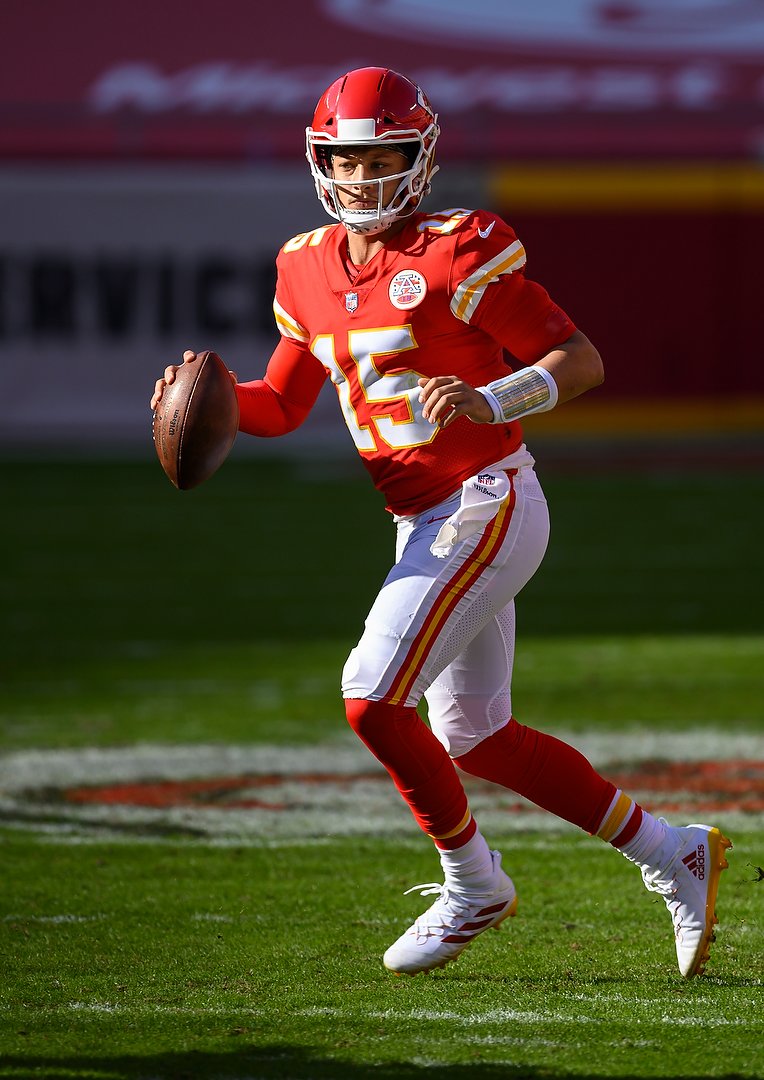
This is exactly the kind of photo AP Images is looking for from me. Shot from the stands in the 2020 season with my Nikon D780 and 500mm f/4 lens. Aperture Priority, Daylight white balance, ISO 280, 1/1600 at f/4 in Matrix metering. (photo copyright AP Images)
As much as I loved the image quality the D780 gave me, I needed more “reach” out of my 200-400mm now that I was back on the sidelines, so my setup evolved once more. This season I paired that trusty lens with a Nikon D500. Containing a 21-megapixel APS-C sensor, the crop factor that came along with it meant that 200-400 was now giving me an equivalent of 300-600mm, which was perfect for my assignment. That actually prompted me to buy a second D500, as I paired it with my Nikkor 70-200m f/2.8 lens (for an equivalent range of 105-300mm with the 1.5X crop factor) for when the action got close to the end zone (most photographers working these games carry two, or even three cameras). Then in late December my Nikon Z 9 arrived and forced another evolution.
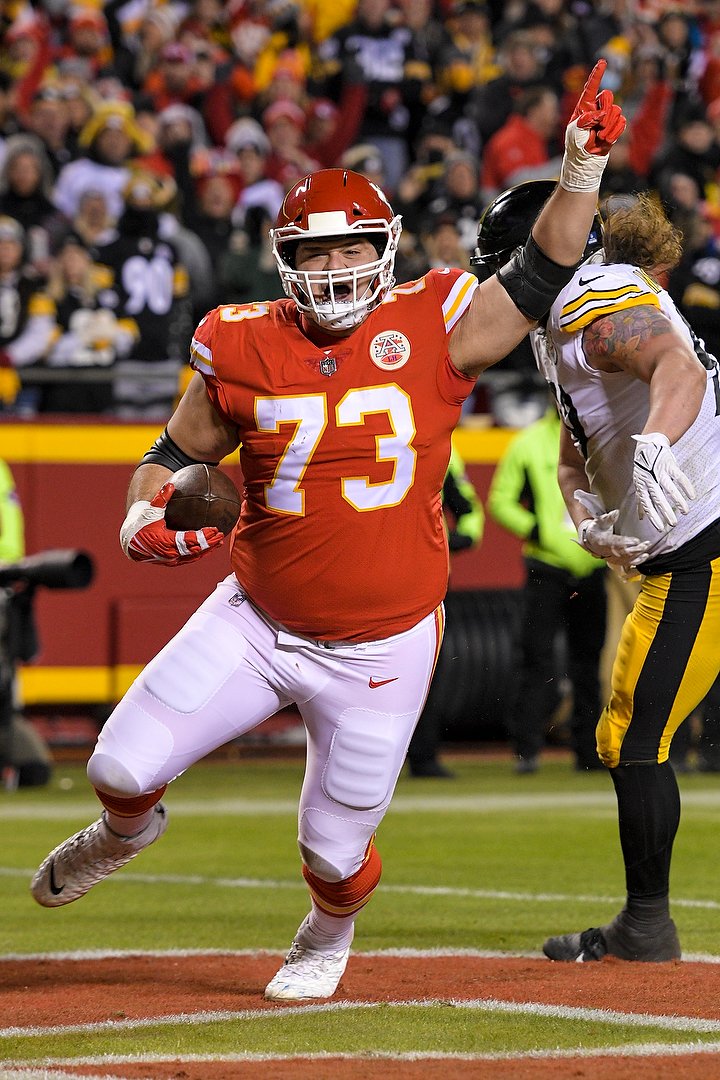
Most photographers are shooting horizontal, loose, to make sure they don’t miss important action. My mandate is to primarily shoot vertical, tighter, for commercial use. So this image of Kansas City Chiefs guard Nick Allegretti celebrating a touchdown against the Pittsburgh Steelers is exactly what my client is looking for. Nikon D500, Auto white balance, ISO 2000, 1/1000 at f/3.5, Nikon 70-200mm f/2.8 lens at 185mm. (photo copyright AP Images)
In the past, I’ve owned multiple cameras for two reasons. One, as a professional photographer I can’t let the failure of a camera (or lens) prevent me from getting the job done. Redundancy is critical. And two, I’ve always followed the mantra, “use the best tool for the job.” That means I’ve chosen what camera to use for each assignment based on its strengths. Some were best for landscape, studio or travel, others for wildlife, sports or night photography. Now, for the first time, I’ve got a camera that does everything well. It combines high resolution (45MP) with fast frame rates (1-30 fps at full resolution), does an amazing job at high ISOs and has one of the best autofocus systems of any camera out there. The only downside is it’s a bit larger and heavier than my other Nikon cameras (Z 6 II, D780 and D500). But that also comes with benefits: the built-in grip allows for more buttons and dials than an accessory grip, is more comfortable in the hand and holds a much larger battery (I can shoot more frames before needing to replace or recharge). To paraphrase a line from Lord of the Rings, it’s one camera that rules them all.
For the first playoff game this January against the Steelers, I shot my new Z 9 with that same 200-400mm lens. I no longer needed the crop factor of the D500’s DX sensor, since the Z 9 gave me 45MP so I could easily crop in and still have more than enough resolution.
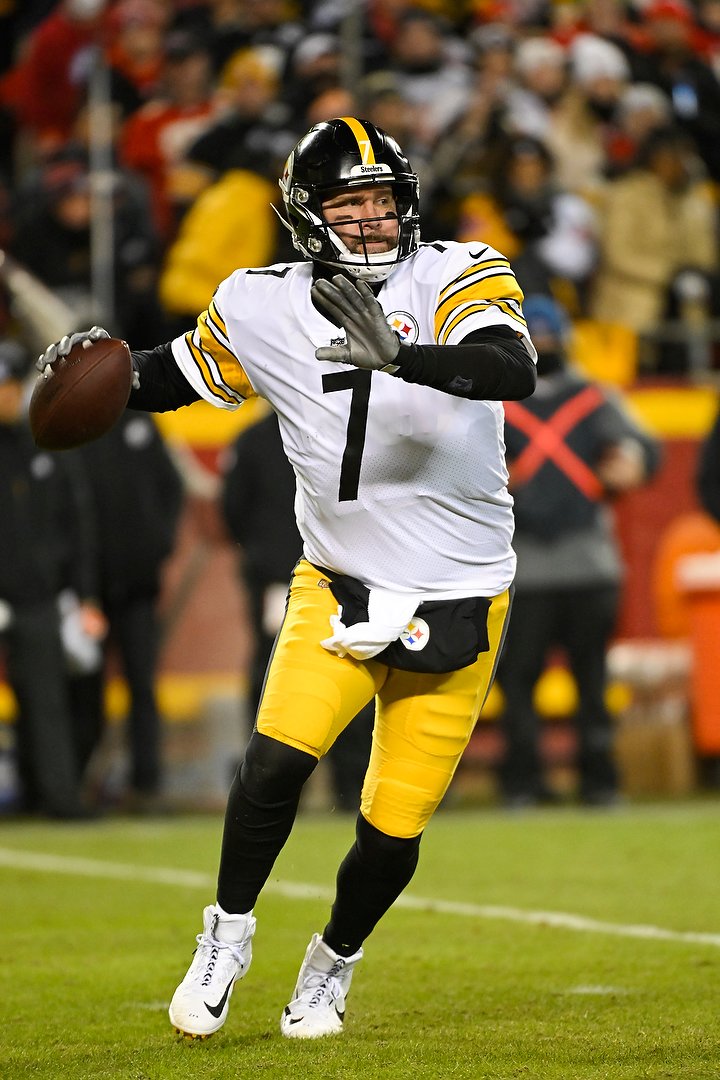
In what was expected to be (and was) Pittsburgh Steelers quarterback Ben Roethlisberger’s final NFL game, I knew photos like this would be important. Yes, I’m responsible for covering both teams on the field, not just the Chiefs. And with the Z 9’s 45-megapixels, I could crop tight and still deliver a 27MP image, which was more than the 24MP that most “sports” cameras produce. Nikon Z 9, Auto white balance, Manual exposure, ISO 5000, 1/1600 at f/4, Nikkor 200-400mm f/4 lens at 400mm. (photo copyright AP Images)
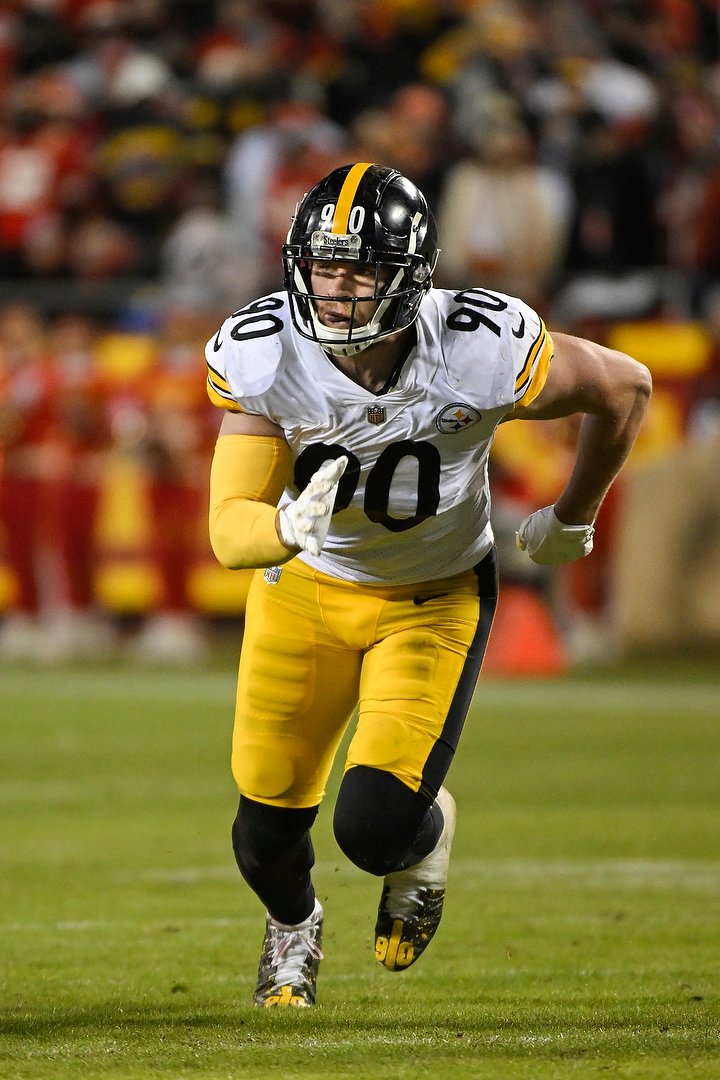
And, of course, there are more players on the field than just quarterbacks. Pittsburgh Steelers outside linebacker T.J. Watt is one of the league’s premier pass rushers, so I’m expected to deliver photos like this as well. Nikon Z 9, Manual exposure, ISO 4000, 1/1600 at f/4, Auto white balance, Nikkor 200-400mm f/4 lens at 400mm. (photo copyright AP Images)
After that first game, realizing I could now shoot at higher ISOs with less noise using the Z 9, for the second playoff game, against the Buffalo Bills, I traded out the 200-400mm lens for my Nikkor 200-500mm f/5.6 lens (giving me more “reach” from my lens). Shooting at f/5.6 with the other cameras, at a fast enough shutter speed, would have meant more noise than I wanted in my photos. The Z 9 solved that problem.
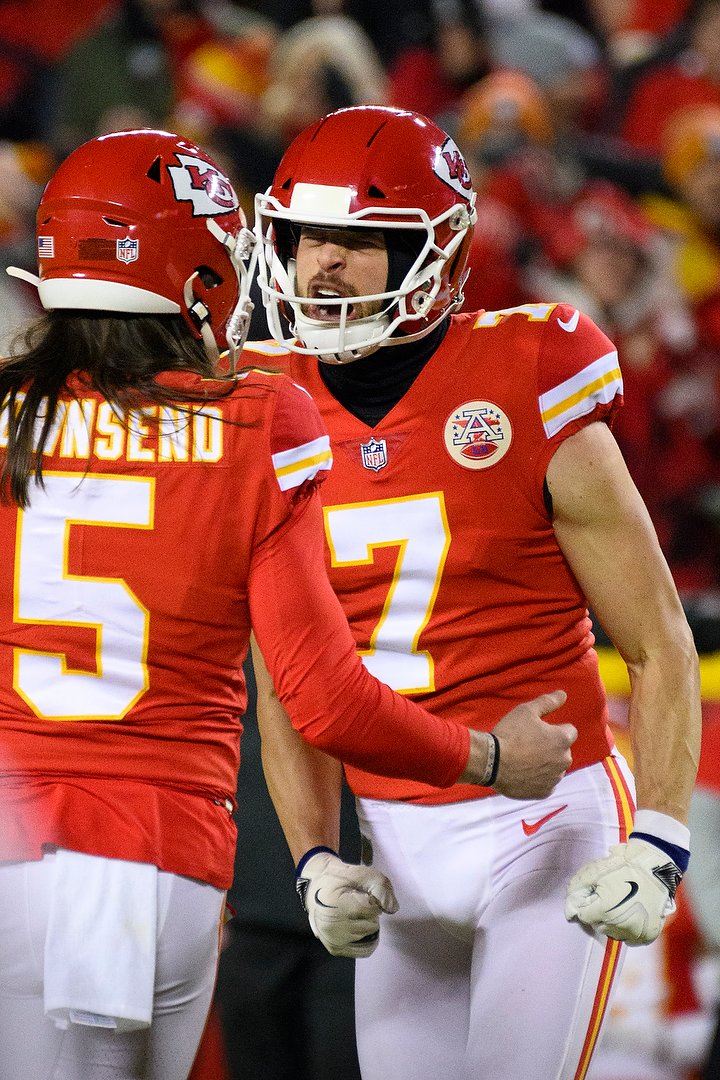
Combining the extra focal length of my 200-500mm lens with the Z 9’s 45-megapixels meant I could deliver a tight photo of Chiefs kicker Harrison Butker celebrating the field goal that tied the game at end of regulation against the Bills. The Z 9’s 45-megapixels let me crop tight and still deliver an 8MP image. Nikon Z 9, Manual exposure, ISO 5000, 1/1250 at f/5.6, Auto white balance, Nikkor 200-500mm f/5.6 lens at 500mm. (photo copyright AP Images)
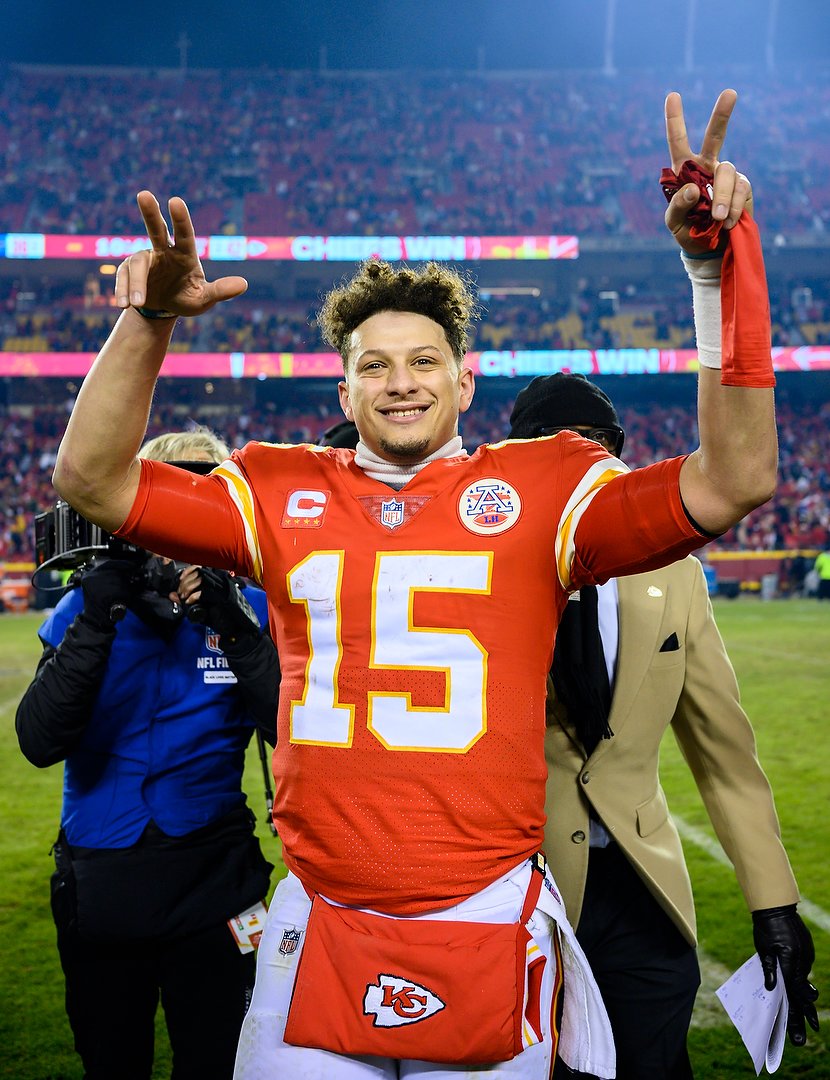
This is a good example of why I usually carry a third camera with a shorter lens. Chiefs quarterback Patrick Mahomes celebrates after beating the Bills to advance to their fourth AFC Championship game. The light weight of the Nikon Z 6 II and 40mm f/2 Z lens meant it was comfortable to keep around my neck the entire game. Aperture Priority, ISO 720, 1/1000 at f/4, Auto white balance. (photo copyright AP Images)
And finally, for last Sunday’s AFC Championship against the Bengals, I was able to borrow a friend’s Z 9 and use two of them. Which meant evolving my gear one more time. Knowing f/5.6 was now a usable aperture at night (with the Z 9), I paired one of them with the excellent Nikkor 500mm f/5.6 PF lens. The “Phase Fresnel” (PF) design makes it’s light enough to use hand-held, meaning I could move more easily by leaving my monopod behind. I carried that combination on the right side of my body using a Black Rapid double harness). On the left side was the second Z 9, this time paired with the Nikkor 70-200mm f/2.8 Z lens and 2X Z teleconverter (giving me 140-400mm, also at f/5.6). And because I knew I’d need something wider for the celebration at the end of the game, I also carried my Nikon D500 and Nikkor 16-80mm f/2.8-4 lens around my neck. This setup worked beautifully, letting me move quickly and shoot hand-held (no monopod to haul around). And not having that monopod after the game, in the crowd of media and players, made my life easier too.
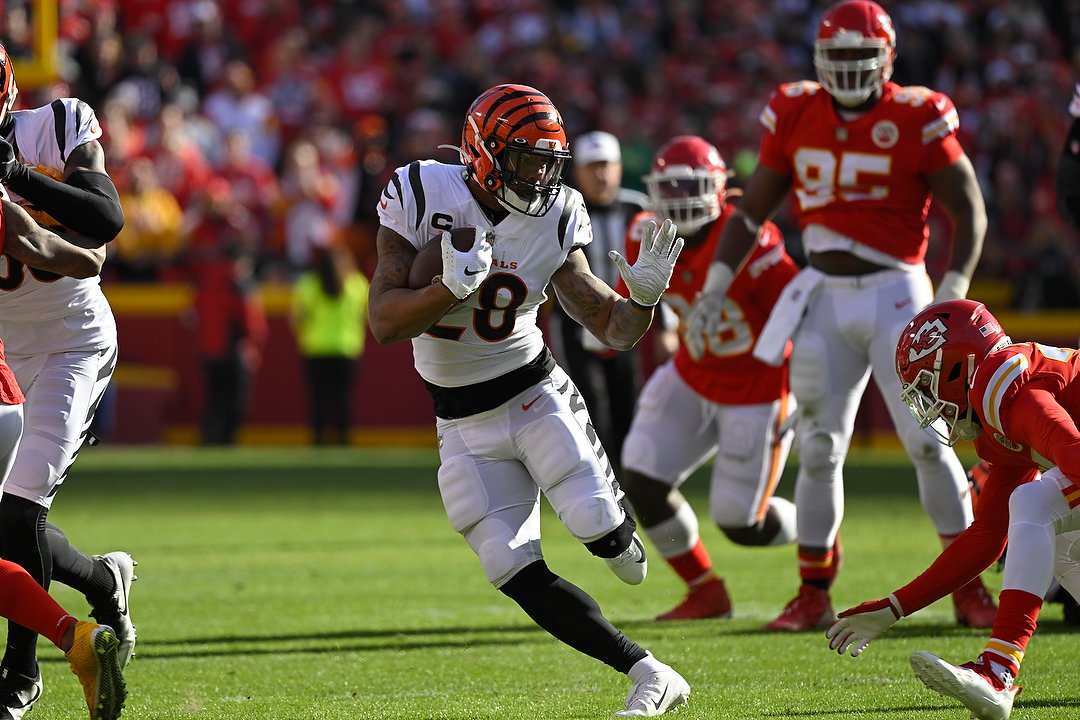
This is the original frame of Cincinnati Bengals running back Joe Mixon from Sunday’s game. While I normally shoot vertically, when the action’s too far away for that I switch to horizontal. The 500mm lens allowed me to reach further out onto the field than I could have with my 200-400, and was lighter than my 200-500 so I could easily hand-hold it for extended periods. Nikon Z 9, Aperture Priority, ISO 560, 1/1600 at f/5.6, Auto white Balance, Nikkor 500mm f/5.6 PF lens. (photo copyright AP Images)
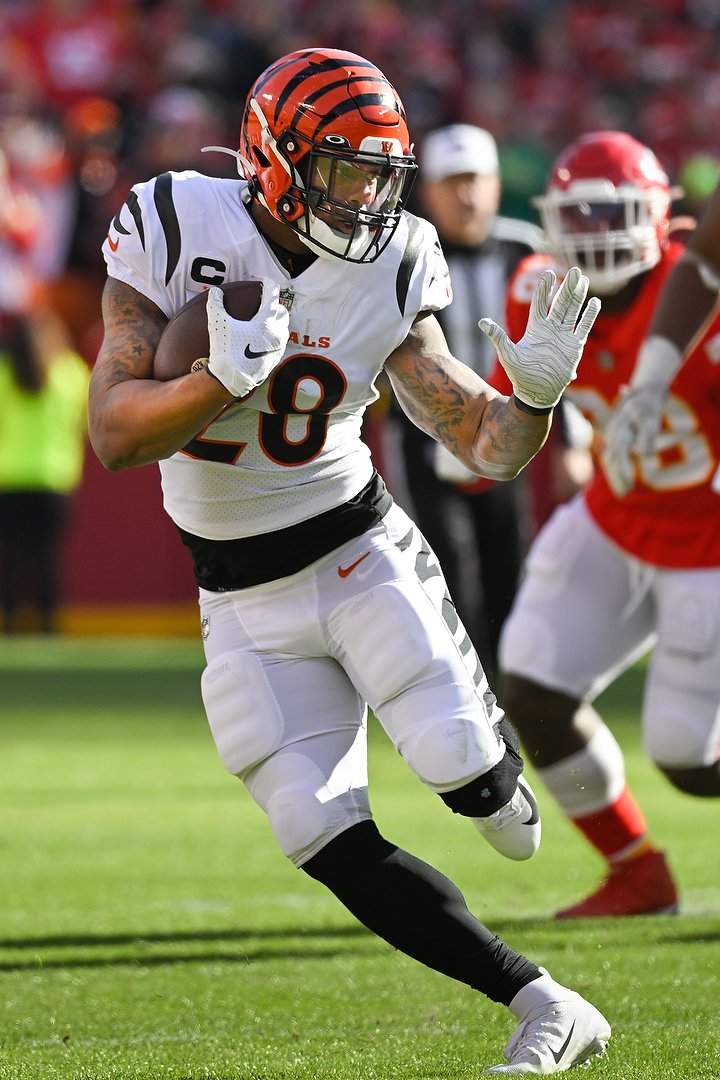
And here’s the image I delivered, edited and cropped into a vertical. Thanks to the 45-megapixel original capture, it still has a lot of resolution, at 17-megapixels. Nikon Z 9, Aperture Priority, ISO 560, 1/1600 at f/5.6, Auto white Balance, Nikkor 500mm f/5.6 PF lens. (photo copyright AP Images)
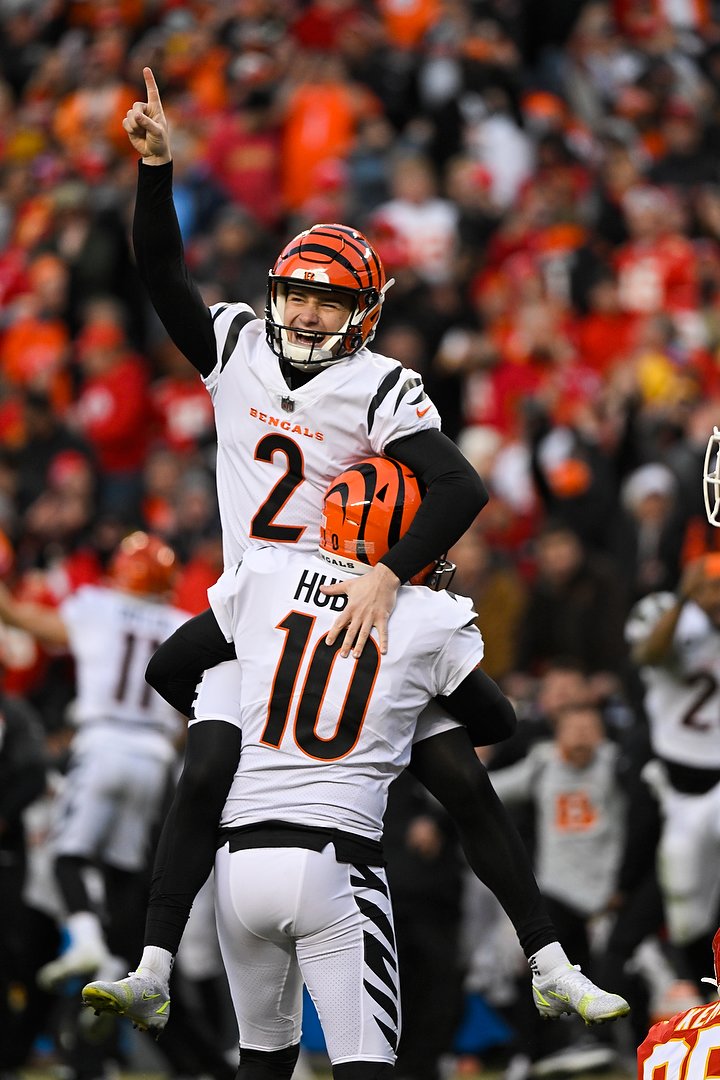
This is perhaps the best photo from that lens and camera combination, as Bengals kicker Evan McPherson jumps into the arms of his teammate after kicking a field goal to win the AFC Championship game. This is the original, full-frame image, all 45-megapixels worth. Nikon Z 9, Aperture Priority, ISO 3200, 1/1600 at f/5.6, Auto white balance, Nikkor 500mm f/5.6 PF lens. (photo copyright AP Images)
Over the course of Sunday’s game, and the celebration afterwards, I shot about 3000 images. Of those, I edited, captioned and keyworded 268 to upload to AP Images. Here’s the breakdown by camera and lens used:
Nikon D 500 and 16-80mm lens – 18 images.
Nikon Z 9 and 70-200mm lens with 2X teleconverter (giving me a focal length range of 140-400mm) – 110 images.
Nikon Z 9 and 500mm – 140 images.
Does this mean I’m going to sell the rest of my cameras and invest in multiple Z 9’s? No, though it’s tempting. But I certainly don’t need as many other bodies as before. Remember “best tool for the job?” I’ll keep a D500, as it’s smaller and still an excellent wildlife camera (great AF, frame rate and love that DX crop factor!). I’ll keep the D780 as well, as it’s also smaller than the Z 9 and excellent at high ISO (UPDATE: I was able to buy a second Z 9, so now I’m selling the D780 as well). I’ve also got my Z 6 II, which is my go-to small, lightweight Z camera with a great feature set. And of course there’s my infrared-converted Z 6.
Is there a second Z 9 in my future? Perhaps. But for now I’ll wait a bit, because I’m sure Nikon’s coming out with more cameras in the future (duh!). And I fully expect that whatever Nikon releases, I’ll be adapting to take advantage of it. After all, I don’t want my career to go the way of the dinosaurs because I didn’t adapt and evolve quickly enough.
– If you want to read more about my thoughts on the Z 9 and its features, check out this recent story I wrote –
(If you like this story, please share it with your friends and let them know about the links on photography that I post on my business Facebook page. I’m also on Instagram and Twitter, @reedhoffmann. And if you’re curious about the workshops I teach, you can find them here. And, you can subscribe to this blog on my home page.)

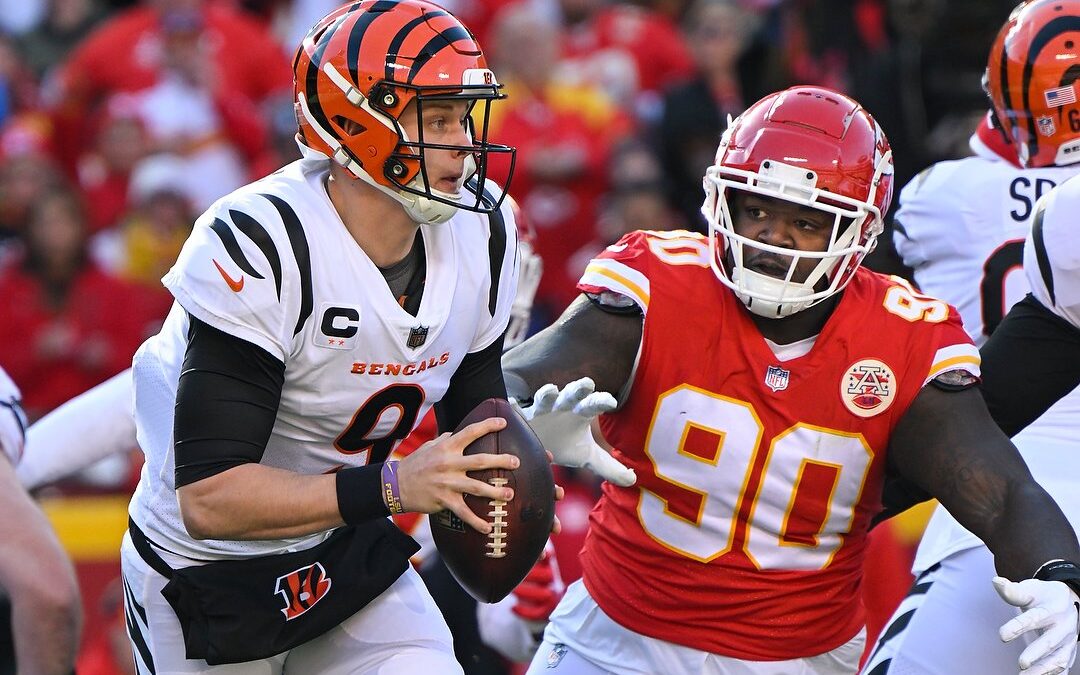
Great description and breakdown comparisons . Thanks for taking the time to write this. As a former sports photographer and AP stringer it’s amazing to read the technical evolution and how you have adapted and used its advantages to continue your vision and imagery. Awesome piece great images.
I assume you are using the FTZ converter to uses the 200-400mm, etc?
Yes, I’ve been using the FTZ converters with all my F-mount lenses with no problems, including the 200-400. I’m slowly buying Z mount lenses, to take advantage of the IBIS and what Nikon can do optically with this new, larger mount.
What GREAT observations! I was having a lengthy discussion on a similar topic with photographers on my workshop chat. I just posted the link to this … end of debate!
Thanks Reed. Sounds like I need to try a Z9.
Absolutely! It will make your eyes (and pictures!) pop 🙂
Thanks for the tips Reed & for the great photos. Nikon sure has made huge leaps since the intro of the Z’s!…
Great to see the settings for each photo Reed! It gives us the technical thinking behind your photos. As I was reading and scrolling I was wishing you would put a before and after crop side-by-side. But true to form you came through.
Thanks Terry. It’s a lot of work to put these together, nice to know someone’s reading them!